

William Stopford
Every car discontinued in Australia in 2025
17 Hours Ago
Mazda has revolutionised the internal combustion process with a mix of diesel and petrol engine tech. How well does it work? We find out.
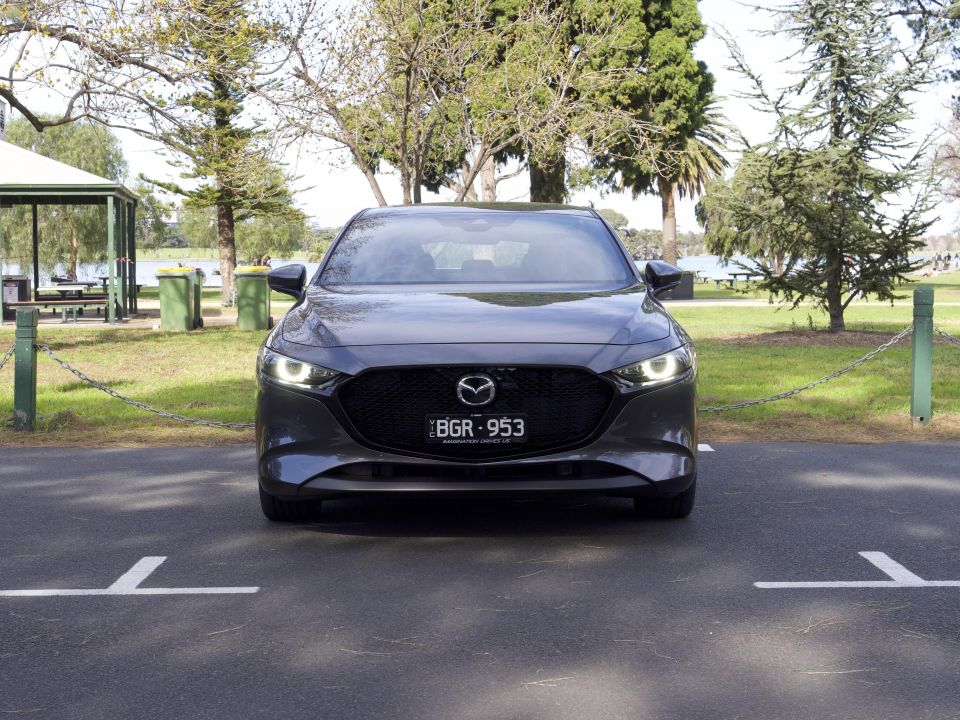
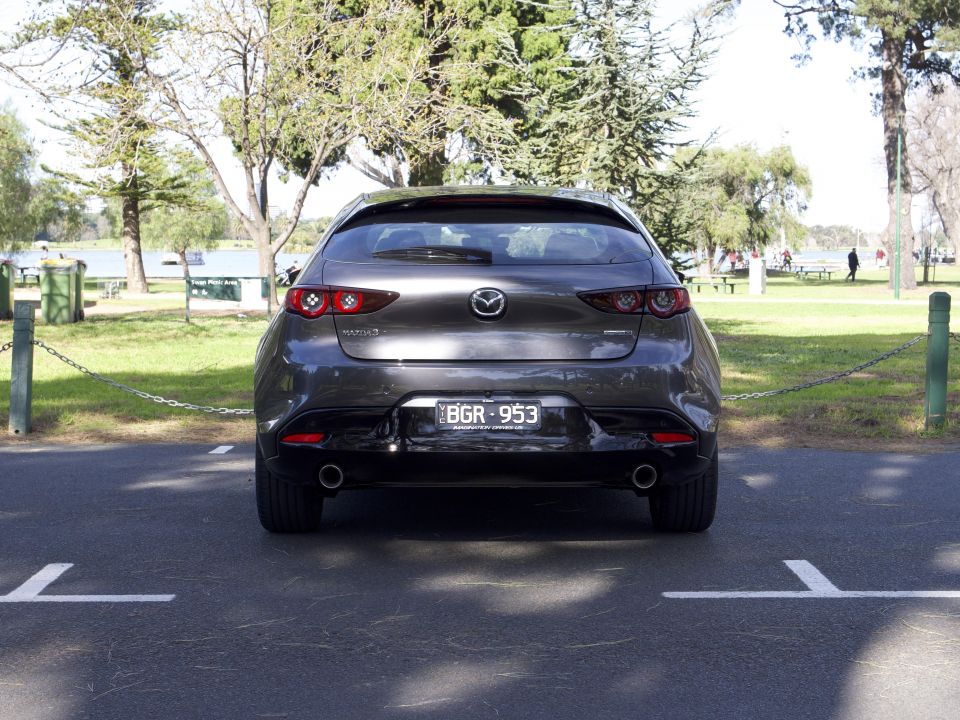

Founder
New from
$27,290
excl. on-roads

Founder
New from
$27,290
excl. on-roads


Founder
New from
$27,290
excl. on-roads

Founder
New from
$27,290
excl. on-roads
Quickly see how this car stacks up against its competition. Select any benchmark to see more details.
Where expert car reviews meet expert car buying – CarExpert gives you trusted advice, personalised service and real savings on your next new car.
Mazda has been on a crusade to increase its premiumness (yes, I know that’s not a word) by improving its interior fit and finish, investing in its powertrain refinement, and jacking up prices.
That refinement hasn’t stopped at the feel from behind the wheel. It also extends to experimenting with new technologies such as hydrogen (with the RX-8 Hydrogen RE concept), electric (in the MX-30), chassis weight reduction, and now with mild-hybrid technology in the form of SkyActiv-X.
SkyActiv-X not only adds mild hybrid to the equation, it also aims to introduce a new combustion cycle yet to be seen on a production vehicle – something Mazda is quite proud of.
Of course, just like all early adopter technology, it comes at a cost premium (around 10 per cent more) and claims to deliver added refinement, fuel efficiency, and no reduction in drivability. Is it worth diving in head first?
We had the chance to spend an extended period with the car to get a feel for it, and a better understanding of the technology.
The Mazda 3 range kicks off from $25,590 before on-road costs for the entry-level G20 Pure with a six-speed manual transmission.
It then climbs all the way to vehicle on test here, the Mazda 3 X20 Astina SkyActiv-X M-Hybrid with a six-speed automatic transmission, which is priced from $41,590 before on-roads. It can be had with a six-speed manual transmission for $1000 less and is available as a sedan as a no cost option.


Priced $3000 higher than the Mazda 3 G25 Astina, it matches the 2.5-litre naturally aspirated vehicle’s specification list.
There are nine colours to choose from, with all free of charge except three metallic colours, which will set you back an additional $495.
Outside of that, there are no other options buyers can select. Everything else is standard. You can read more about the X20 Astina pricing and specifications here.
Buy your new car without the stress. It's fast, simple and completely free.

Great service from Travis and team, second time I have used this business would not hesitate to recommend them to anyone
Craig C.
Purchased a Ford Ranger in Sunshine Coast, QLD
CarExpert helped Craig save thousands on his Ford Ranger, now let us save you on your next new car.
Find a dealOn the outside you’ll find 18-inch alloy wheels, full matrix LED headlights with LED daytime running lights, LED tail lights, front and rear parking sensors, a 360-degree reverse-view camera, and proximity key entry and start.
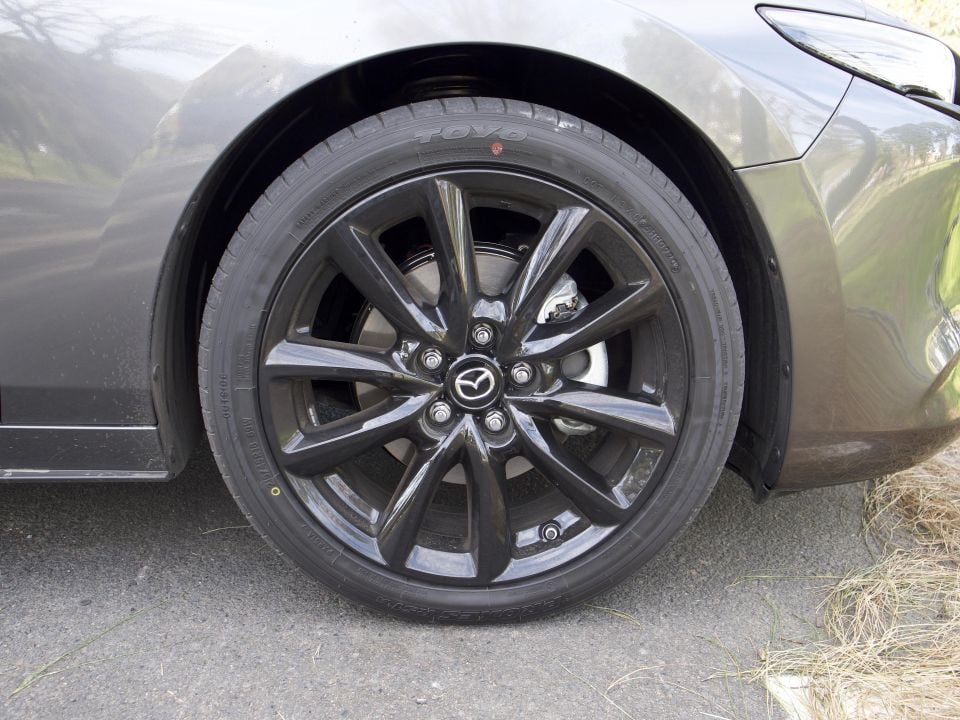

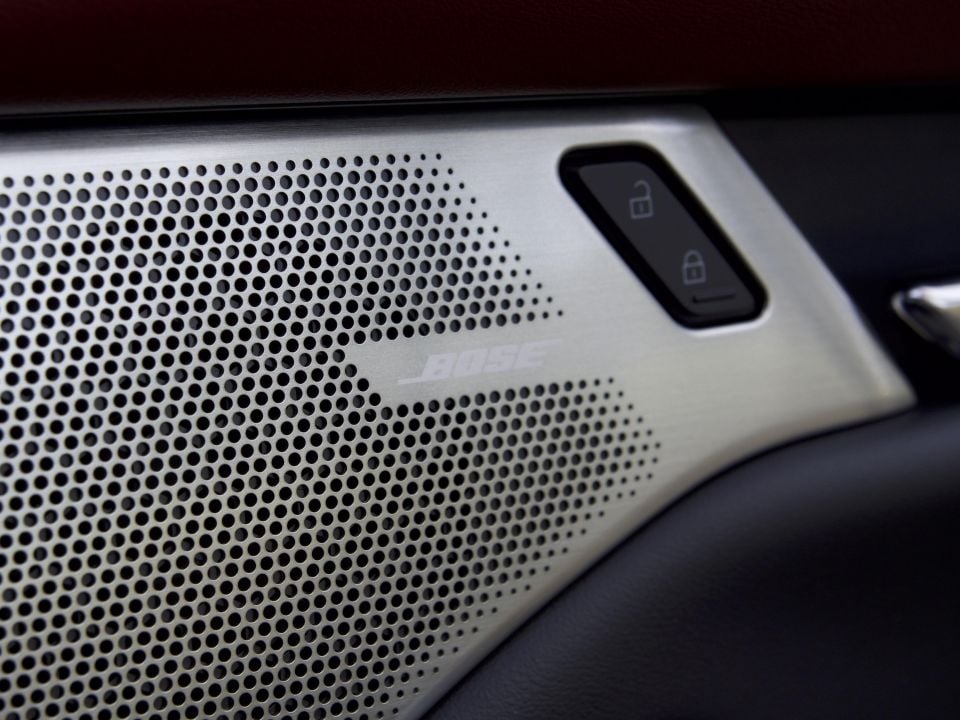
Inside the cabin, Mazda has thrown the feature book at the X20 Astina, including heated front seats and steering wheel, dual-zone climate control, a head-up display, a 7.0-inch display in the tachometer cluster, an 8.8-inch infotainment system with Apple CarPlay and Android Auto, leather seats with electric adjustment and memory for the driver’s seat, automatic headlights (including high beam), automatic windscreen wipers, and radar cruise control.
There’s also a 12-speaker Bose stereo with brushed aluminium speaker covers to round things out.
The Mazda 3 was tested by ANCAP in 2019 and scored a five-star safety rating.
The testing was broken down to include a 98 per cent adult occupant protection rating, 89 per cent child occupant rating, 81 per cent child occupant protection score and a 76 per cent safety assist score.

Standard safety features include low and high-speed autonomous emergency braking (AEB) with pedestrian and cyclist detection, front and rear cross-traffic alert, lane-keeping assist, blind-spot monitoring, and lane departure warning.
Mazda’s efforts to increase the premiumness (there’s that word again) of the 3’s interior has worked a charm, with a dual-tier dashboard including a soft rubber material along the top layer, followed by a leather material in an offset colour on the tier beneath.
It’s visually stunning and immediately catches the attention of anybody that gets into the car. Likewise the new 8.8-inch Mazda-Connect infotainment system that sits atop the dashboard. It features AM/FM and DAB+ digital radio, along with the integration of a wired Apple CarPlay and Android Auto smartphone mirroring system.
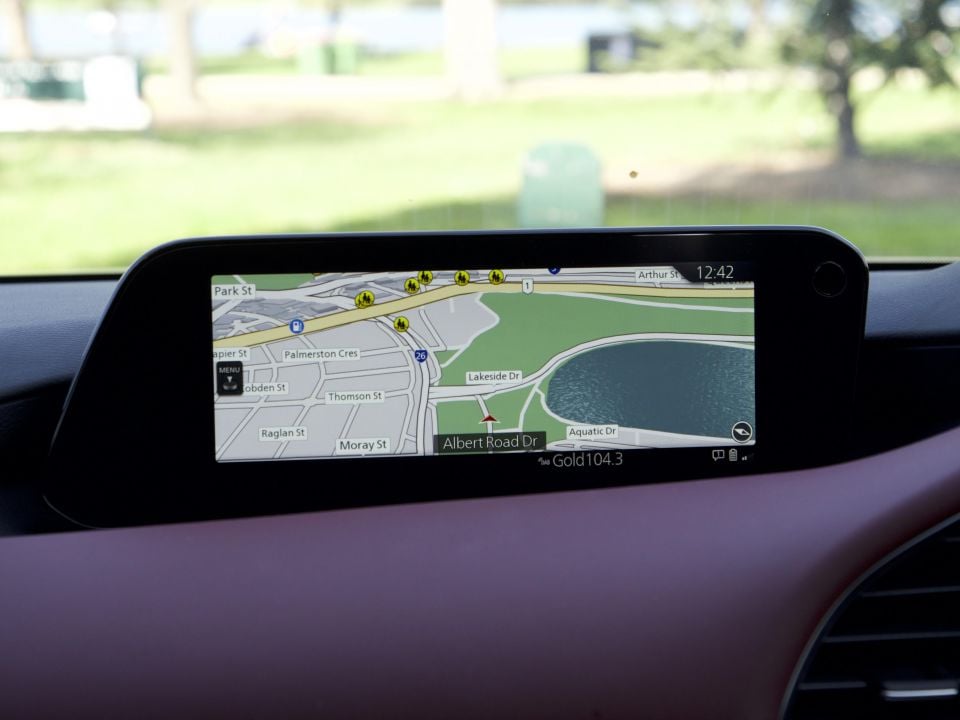
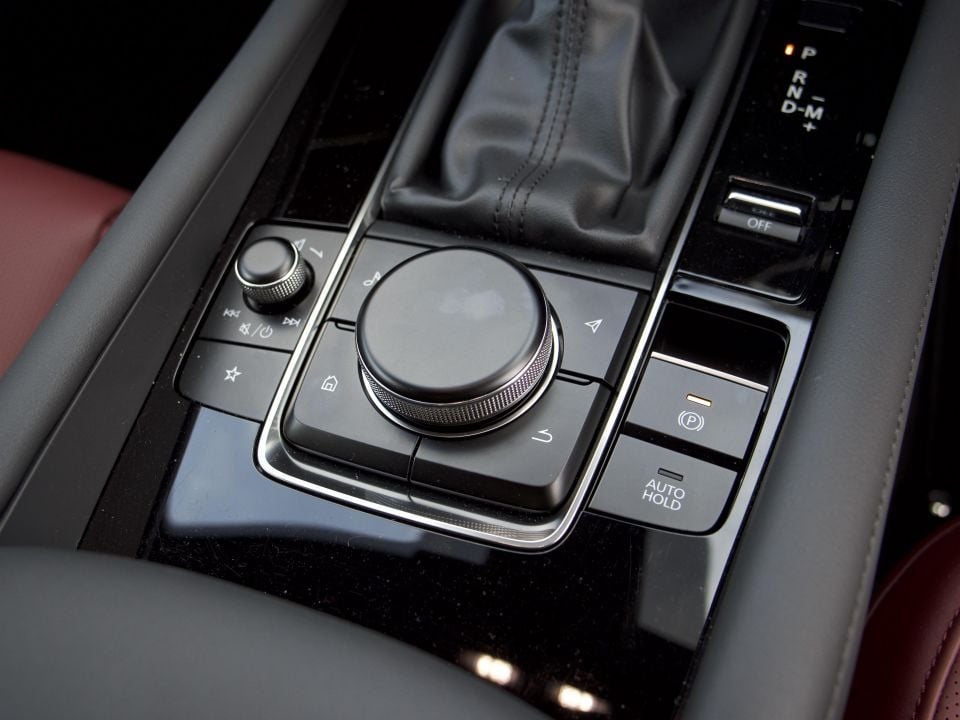
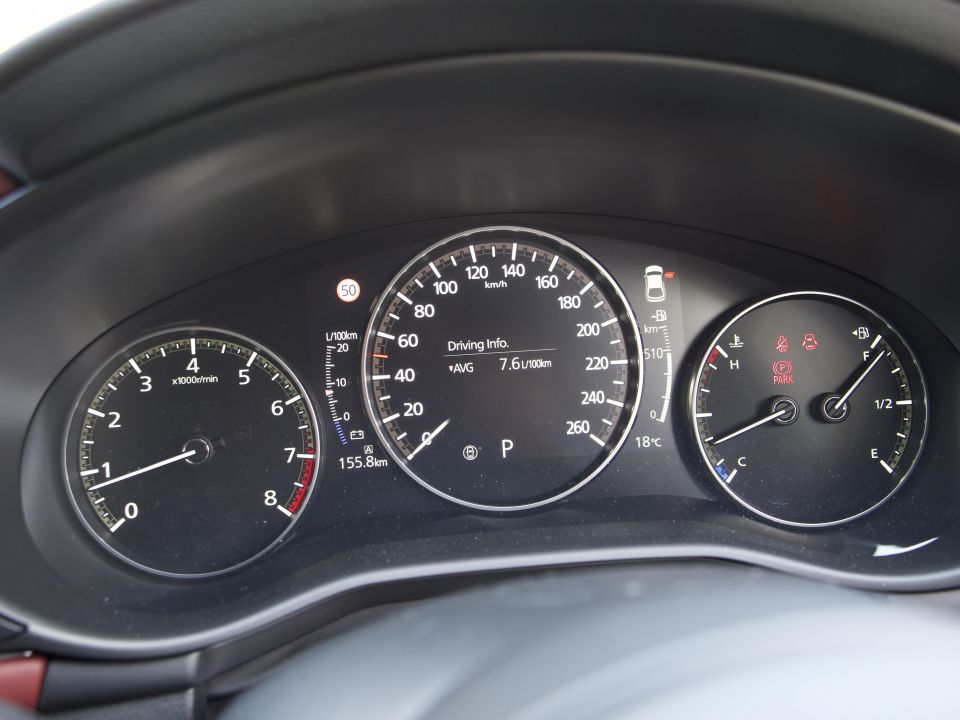

Touchscreen functionality has been removed from the mix. Instead, the infotainment system is now exclusively operated using an iDrive-style rotary controller flanked by shortcut buttons on the transmission tunnel. It works pretty well and is backed up by a voice recognition system that handled all commands we threw at it.
It’s worth noting when you have Apple CarPlay or Android Auto connected, you can only reach the side menu items by scrolling through all of the items on the screen first. It can be quite distracting and is a little counter intuitive when the rotary controller has a side swiping function that would achieve the same result.
The 12-speaker Bose sound system is excellent and kicks up the cabin atmosphere a notch with high-quality sound and great dynamic range, especially when digital music is streamed through the sound system.
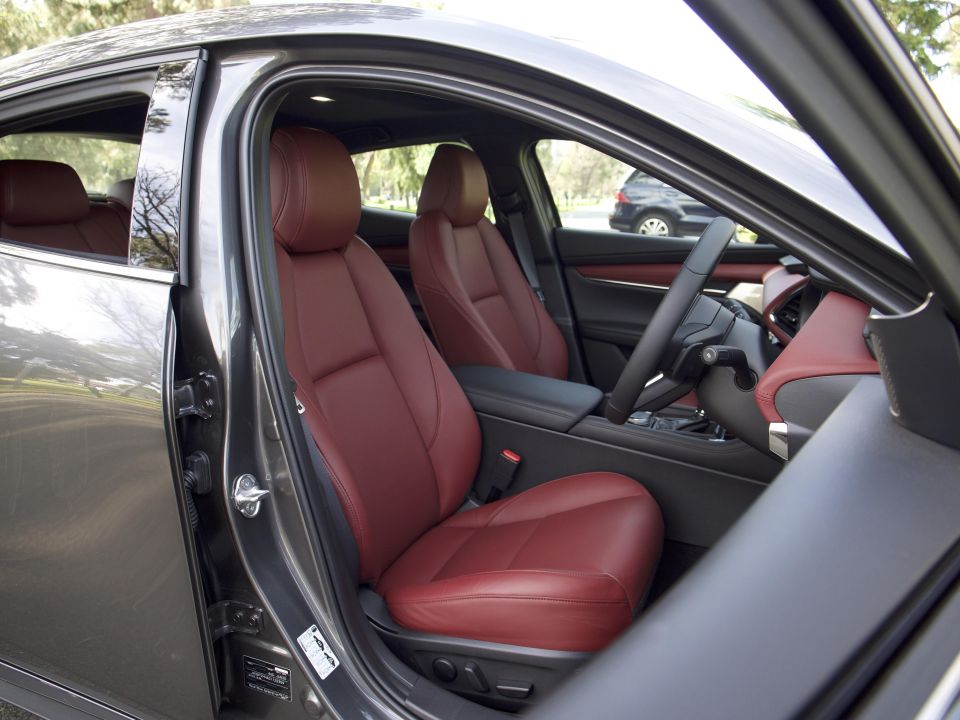
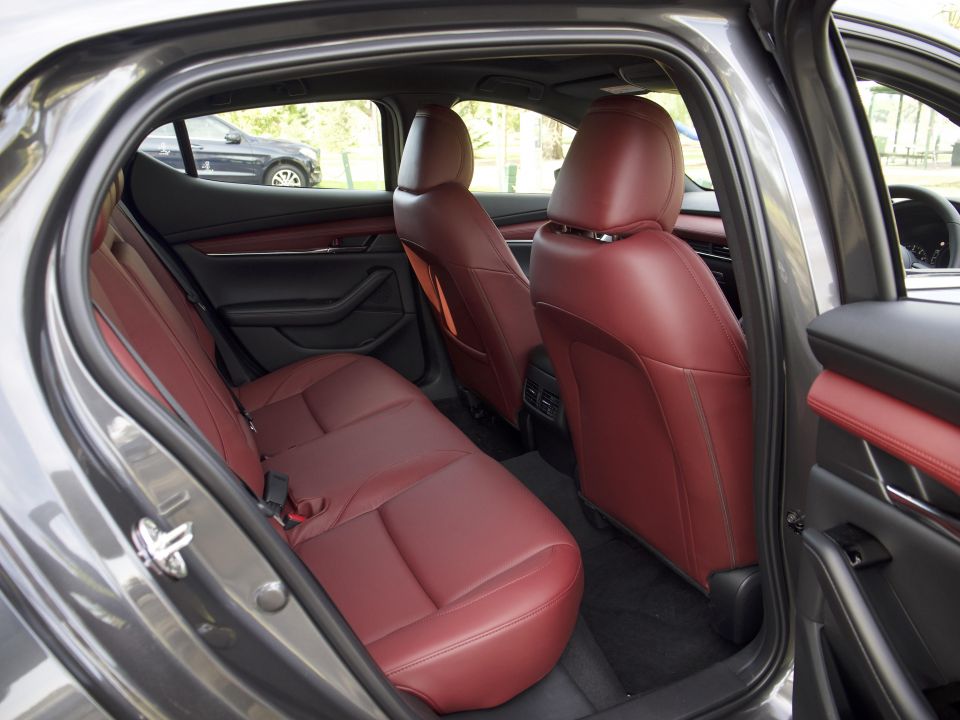
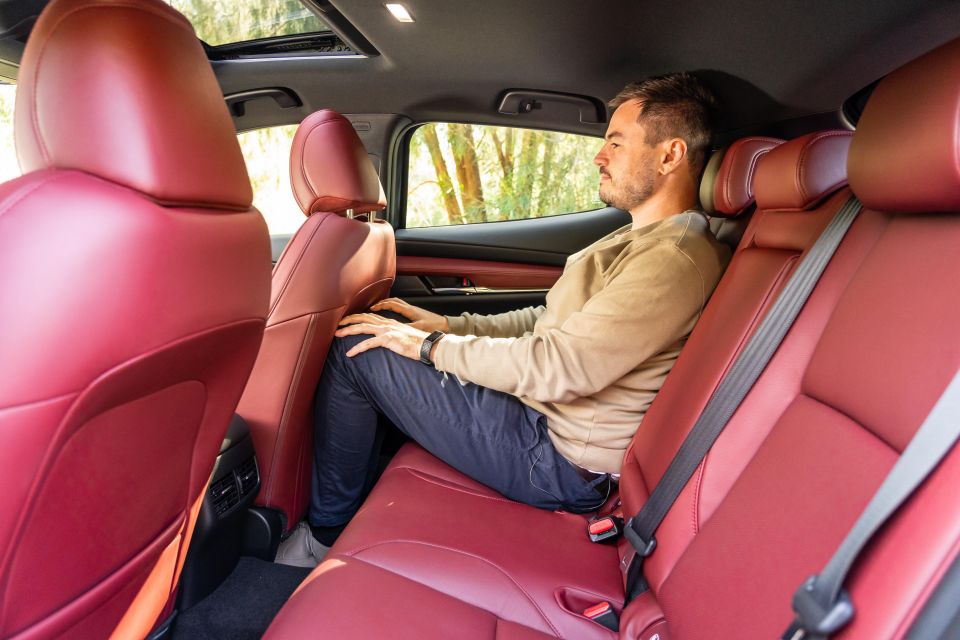
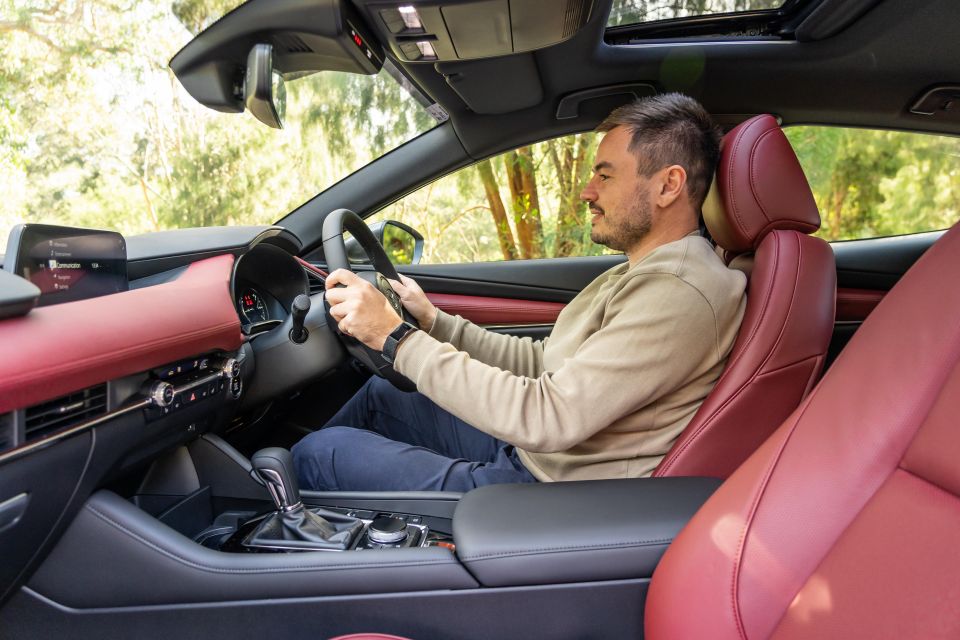
Outside of that, the head-up display is nicely located and the 7.0-inch instrument display presents with trip computer information and details relating to the driver assist functions.
Leg and headroom in the first row is good, but the same can’t be said for the second row. We found it quite cramped, with little knee room, no toe room, and restricted headroom.
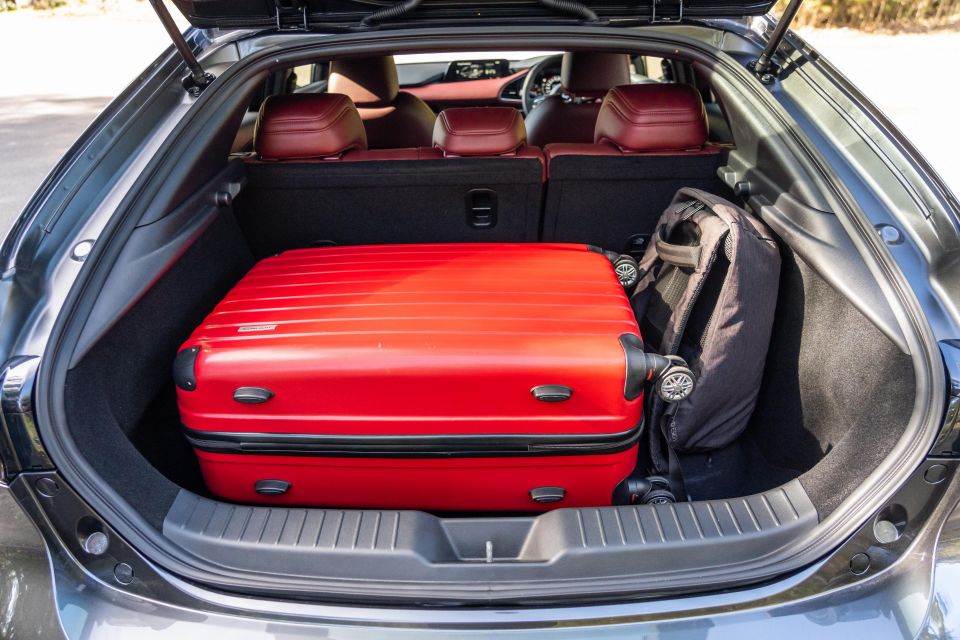
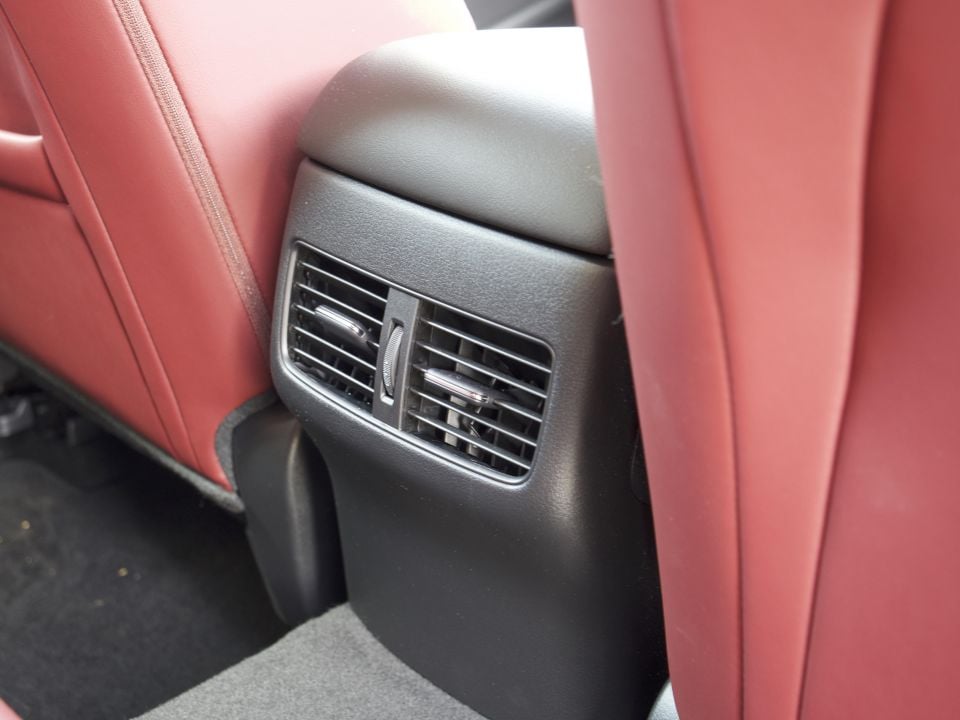
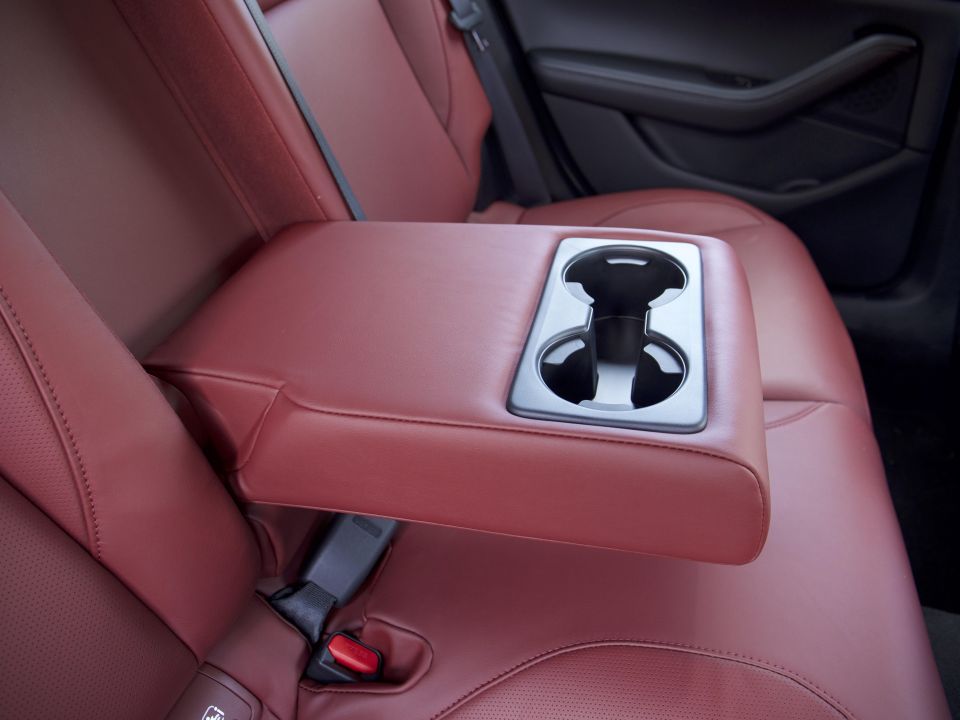
It also felt quite claustrophobic in the hatch with the rising belt line infringing on natural light entering the second row. There’s a centre armrest with two cup holders, along with two air vents, but there’s no USB charging or map pocket behind the driver’s seat.
Cargo space comes in at a fairly poor 295 litres, which is a 13-litre reduction on the outgoing Mazda 3 hatch. Beneath the cargo floor you’ll find a space saver spare tyre.
This is where Mazda claims to have made the biggest advancements with the 3’s drivetrain.
The X20 SkyActiv-X is a 2.0-litre naturally aspirated petrol engine driving the front wheels, producing 132kW of power and 224Nm of torque. It’s mated to a six-speed automatic transmission, with a six-speed manual available for $1000 less.
Mazda claims a combined fuel economy of 5.5 litres of fuel per 100km for the six-speed automatic, and 5.3L/100km for the six-speed manual.
This entire system is mated to a 24V mild-hybrid system attached to a belt-drive integrated starter generator designed to smooth out restarts, and allow the vehicle to switch the internal combustion engine off as it rolls to a stop at speeds below 22km/h while still operating all critical components.
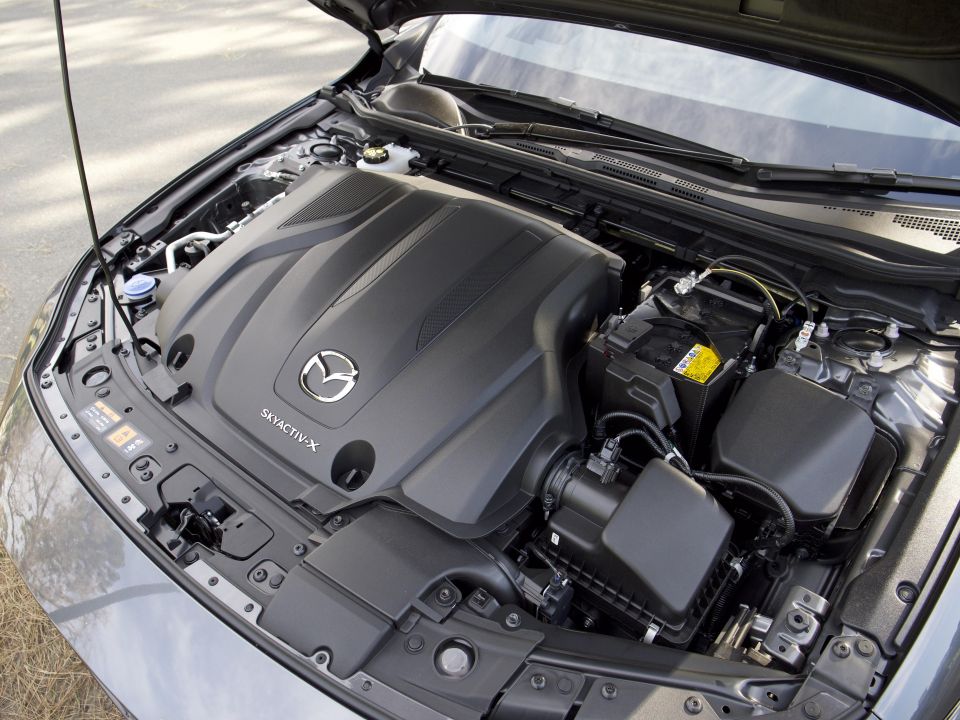
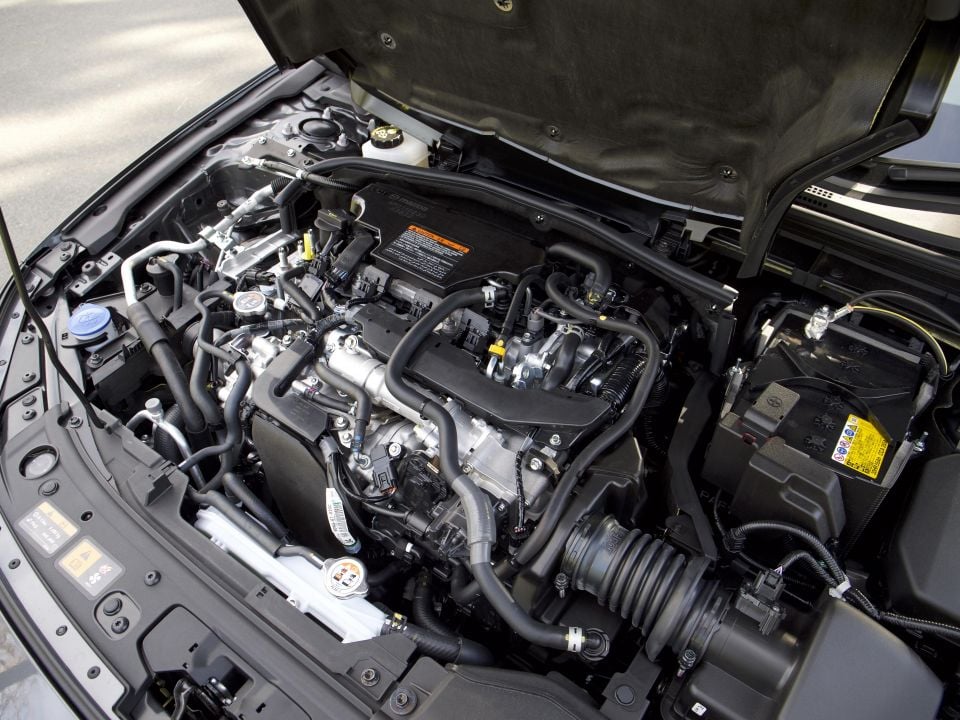
Additionally, the starter generator allows the vehicle to charge a small lithium-ion battery located between the wheel arches that assists with torque delivery and maintaining the operation of critical items while the car is switched off.
The SkyActiv-X components add around 60kg of additional weight over the G25 Astina.
So a mild-hybrid system is pretty straightforward technology, and a 24V system is far less complex than the 48V systems used in a number of new European vehicles. It’s the internal combustion process that Mazda claims to have revolutionised.
The SkyActiv-X engine uses a mixture of compression ignition and spark ignition across its rev band to improve fuel efficiency. What exactly does that mean?
Compression ignition is generally used in diesel engines. A diesel engine goes through adiabatic compression, where air is drawn into the chamber during the intake stroke, then compressed during the compression stroke where it is heated. Atomised fuel is then injected into the chamber, which causes a spontaneous ignition, forcing the piston head back down the chamber, creating torque that’s transferred through the driveline.
The downside to this technology is that it only works well at low revs, which doesn’t make it useful in a naturally-aspirated petrol application. The ideal solution would be to be able to switch between compression ignition at low rpms and traditional spark ignition at higher rpms.
This is what Mazda has been able to achieve, but with a key difference at low rpms. At low engine speeds, the SkyActiv-X engine still undergoes compression ignition, but instead of only drawing air during the intake stroke, a small amount of fuel also enters. During the compression stroke atomised fuel is then injected into the chamber (precisely enough to just avoid spontaneous ignition) before a spark creates an explosive high-energy fireball within the chamber to create torque.
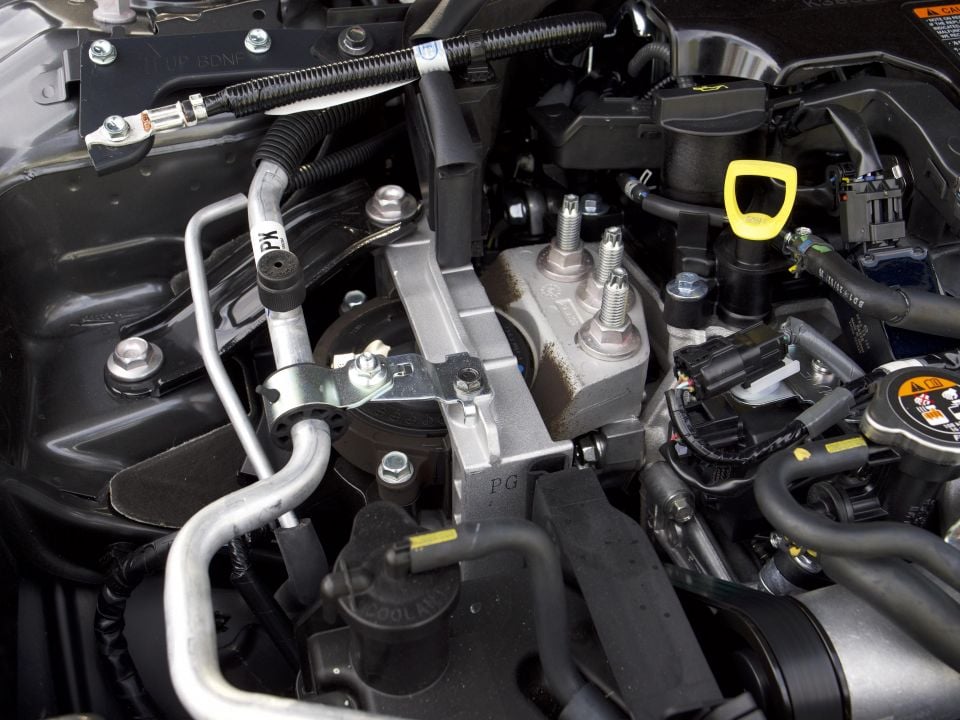
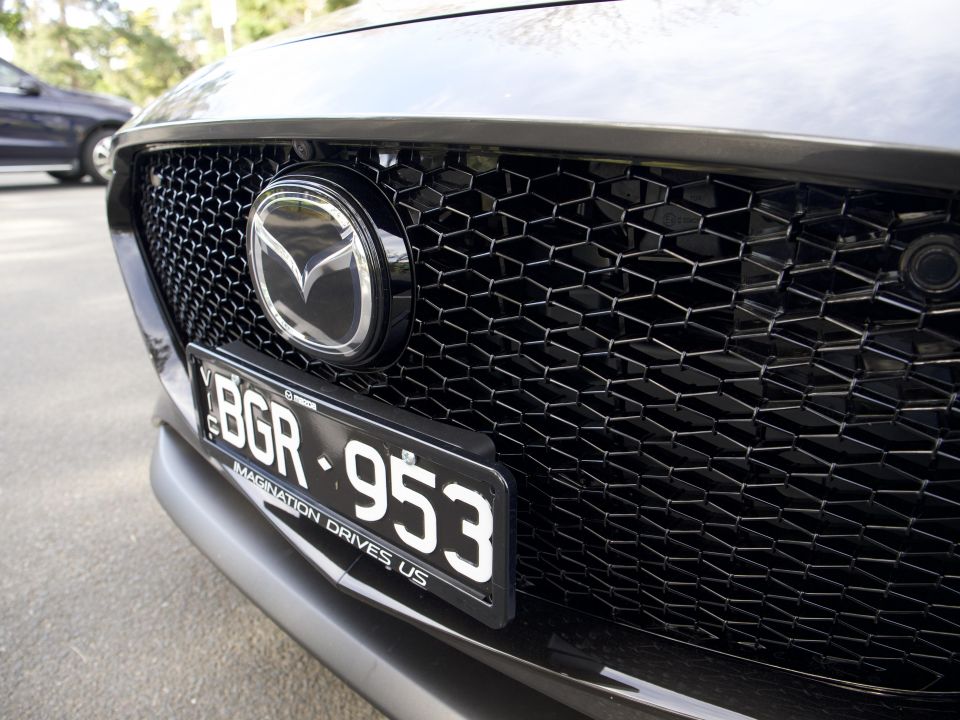
By using this system, Mazda has been able to create a compression ratio of 15:1, which is slightly higher than the ideal stoichiometric air/fuel ratio of 14.7:1, making this a lean mixture. During the intake stroke that mixture is actually far more lean at 37:1 and is aided by a small supercharger, which helps feed in the extra air required.
It’s worth noting that the peak torque figure of 224Nm is achieved at 3000rpm, which is 1000rpm lower than the peak torque figure of 252Nm in the 2.5-litre version of the Mazda 3. It’s also worth noting that while the G25 Astina can operate on 91RON unleaded fuel, the X20 Astina requires a 95RON premium unleaded fuel.
There’s no denying the SkyActiv-X engine is a unique feat in internal combustion engines and an impressive engineering flex, but it’s all kind of pointless if it doesn’t work, right?
We wanted to make sure this drivetrain matches the hype behind it and participated in the local launch drive of the X20 Astina organised by Mazda. It included a 1.5 hour drive loop across a mixture of highways, city streets, and a drive over a mountain.
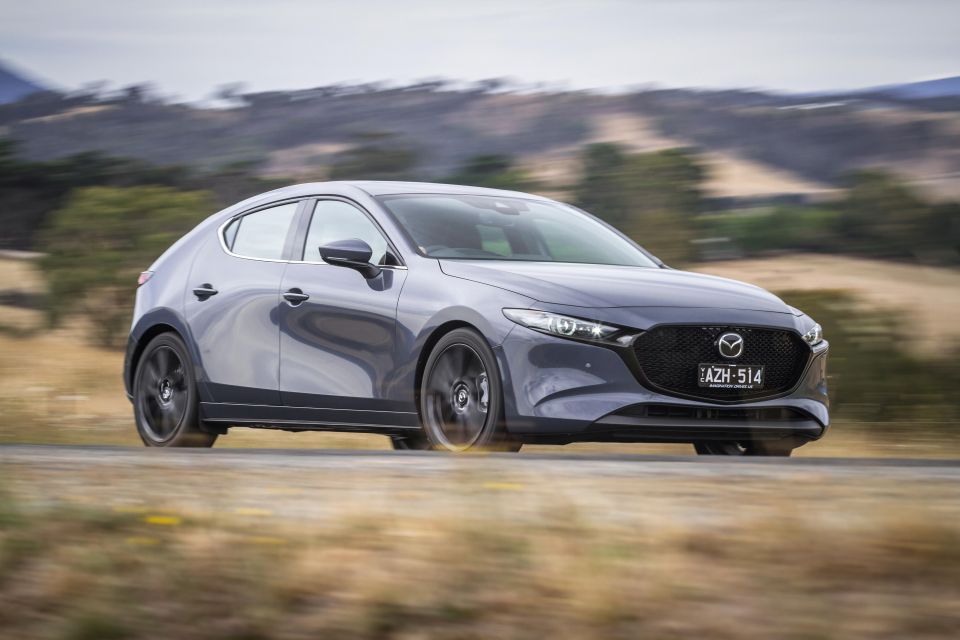

We then took a vehicle following the launch and did our own drive route that included a highway run, a twisty stretch of country road, and stop/start city driving.
As you turn the Mazda 3 X20 Astina SkyActiv-X over, it idles like any other Mazda. It’s hard to tell the difference between this drivetrain and the regular 2.5-litre in the G25 Astina. If anything it idles a little less roughly than the 2.5-litre unit on a cold start.
Setting off, the gear shifts feel smoother and the most obvious difference is the first time you roll to a stop. At around the 20km/h marker the engine switches off entirely and rolls to a stop. Engine restart is also imperceptibly smooth – from a standing start it’s almost impossible to notice that the engine has switched back on. It feels as good as the 48V mild-hybrid systems in the European cars we have recently tested.
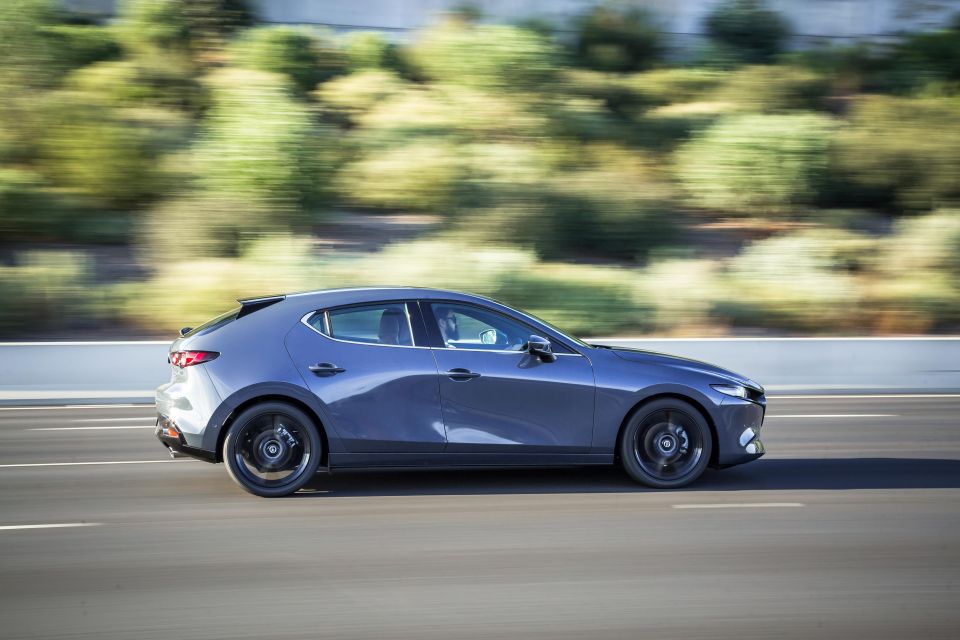
The only time it doesn’t feel smooth is when it switches off below 22km/h and the driver releases the brake pedal before it has come to a complete stop – at that point it can jerk a little as it restarts itself.
In terms of engine response, the SkyActiv-X feels about as responsive as the 2.5-litre – without testing them back-to-back, it’s hard to tell, but from what we recall of the 2.5-litre both engines feel as ready as each other to jump into action.
What you do notice in the 2.0-litre SkyActiv-X though is a greater tendency to rev higher for longer. It will hold gears for longer and the engine will rev out while it continues accelerating – this is most noticeable when climbing long ascents.
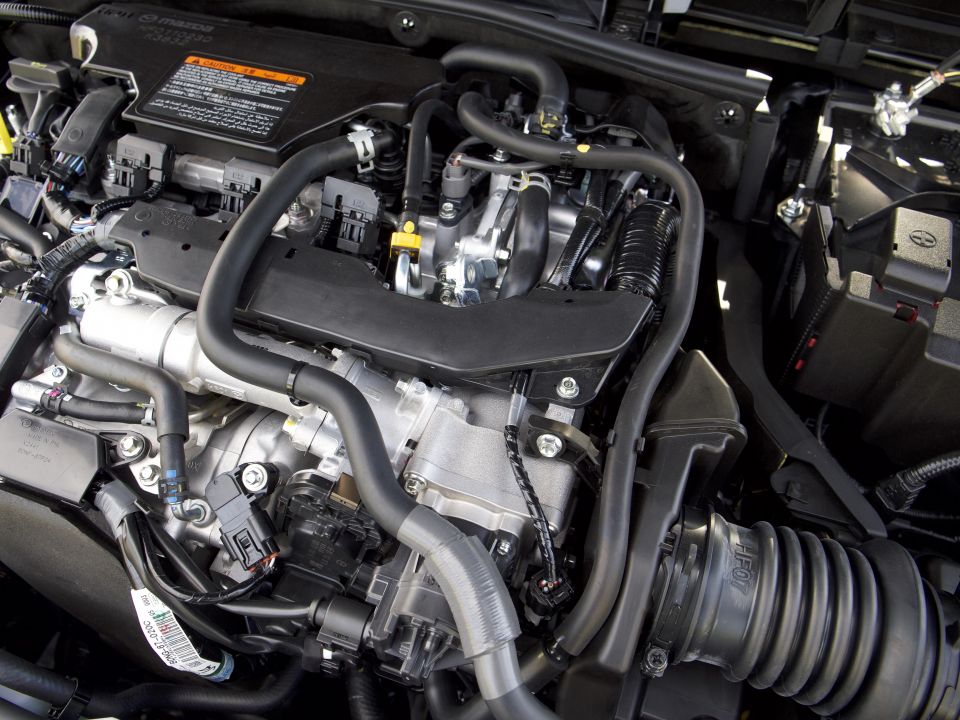

The gearing in the X20 SkyActiv-X is around 12 per cent shorter than the similarly sized G20 2.0-litre Mazda 3. There’s also added boost from the lithium-ion battery that’s fed by the starter generator, with an addition of 4.8kW and 60Nm of torque.
With that tendency to rev, you’ll also notice that the engine can be quite noisy. It’s not an unpleasant sound, but when it’s holding a gear at 3000rpm for an extended period it can get a little tiresome.
Outside of that, it feels just as sporty as the G25 Astina through bends – it’s hard to notice the extra 60kg of weight and it retains that ‘Zoom Zoom’ feeling. It keeps the torsion beam rear end – something that’s becoming increasingly rare at the top end of the hatch market.
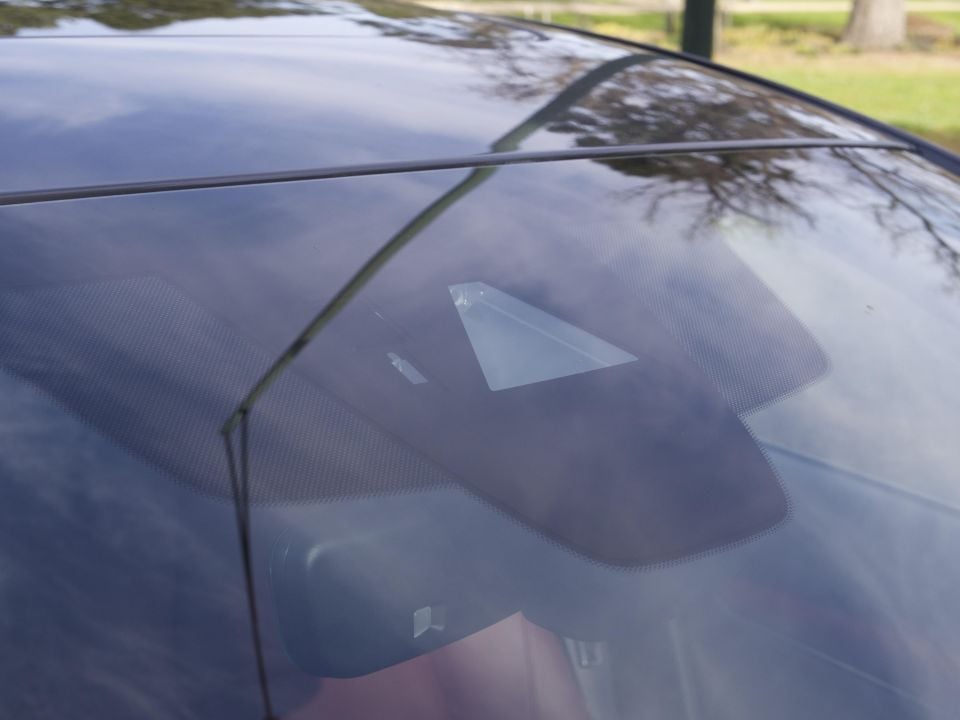
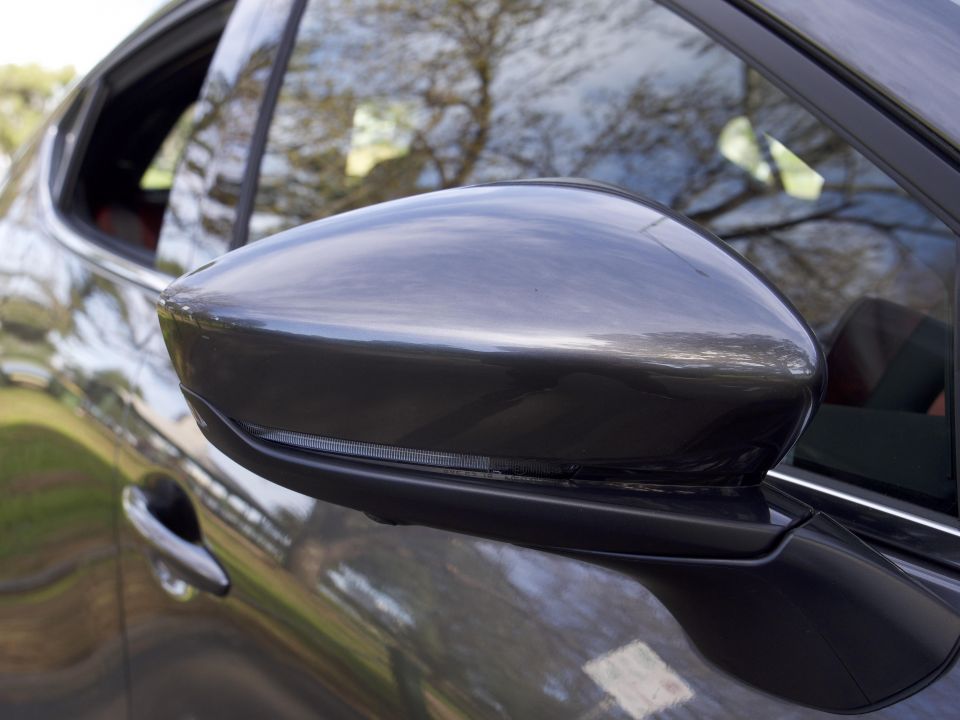
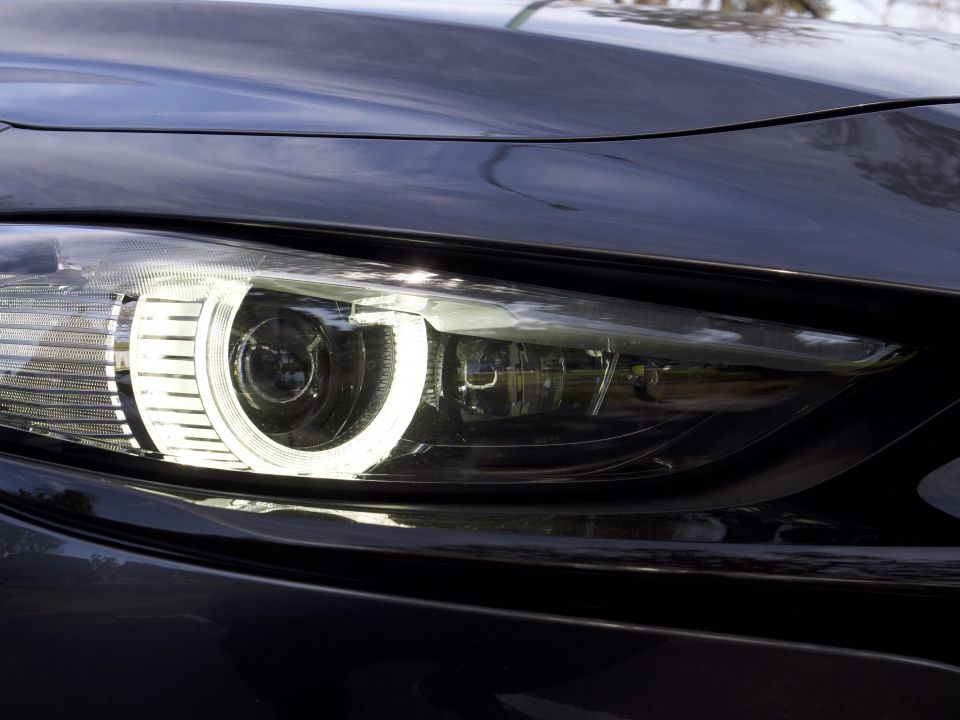
There’s noticeable road noise on coarse chip surfaces. It’s not as obvious as the outgoing Mazda 3, but you’ll notice it at highway speeds.
So, what about all important fuel economy? This is where the equation starts to make a little less sense.
During our launch drive, we made a concerted effort to listen to the engine and get a feel for the technology. This included deliberately smooth driving to see what a best case scenario would feel like. The end result was a combined average economy of 5.8L/100km over the 1.5 hour journey.
Our second stint with the car included more weight in the car with camera equipment, along with some idle time during filming and a longer stint in the urban environment. This ended up with a combined economy of 7.8L/100km over a day of driving, a figure around 1.0L/100km less than what we achieved when testing the G25 Astina earlier in the year.
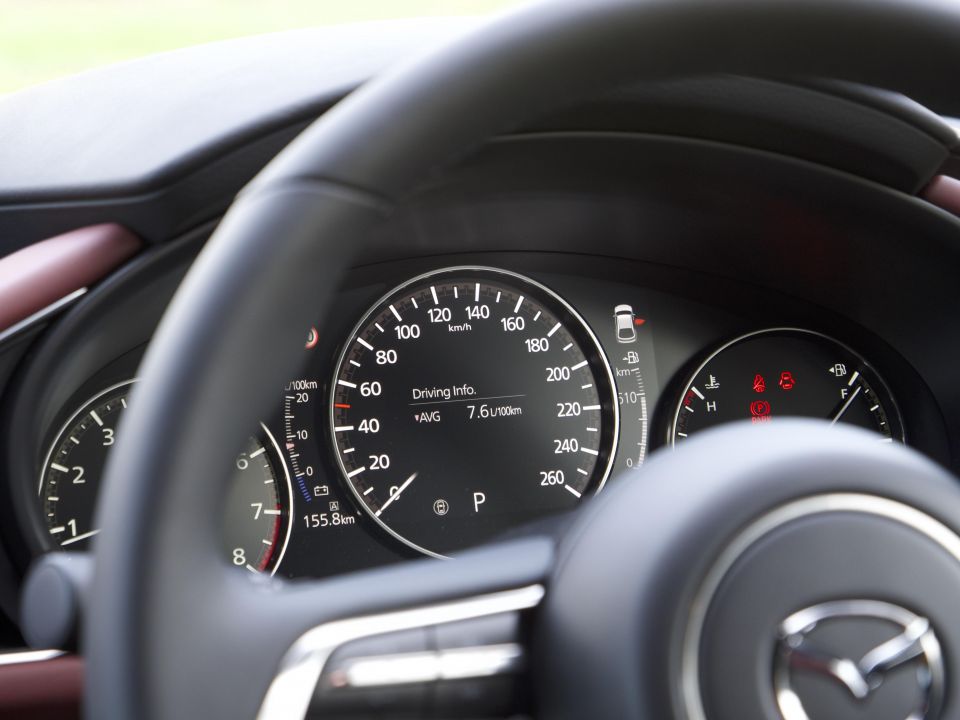
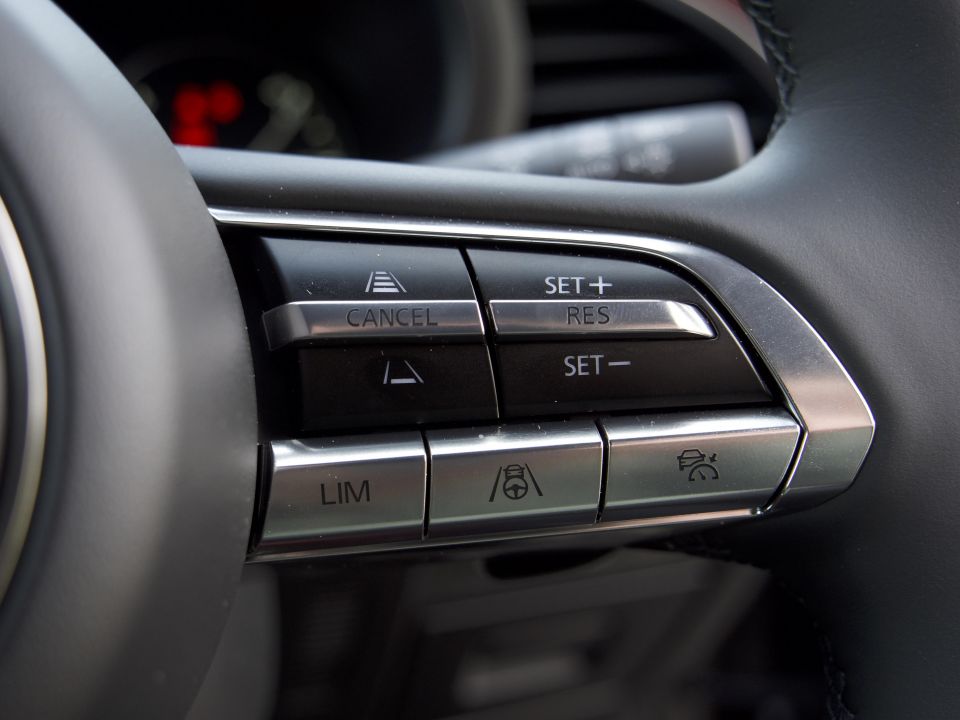

Where expert car reviews meet expert car buying – CarExpert gives you trusted advice, personalised service and real savings on your next new car.
That makes it five per cent higher than the claim during the launch drive, and 29.5 per cent higher during the extended drive.
Compare this to the Toyota Corolla hybrid, which has a claimed combined economy of 4.2L/100km. During a similar filming test loop, we achieved a combined average of 5.5L/100km (with a similar drive route and similar idle time), which is around 24 per cent higher. The top-specification similarly equipped Corolla ZR Hybrid also costs almost $7000 less.
Keep in mind as well the Corolla is a series hybrid, which means it can drive on electric power alone at low speeds, where the X20 Astina is a mild hybrid that can’t be driven on electric power – it simply acts as an occasional torque boost.
Mazda offers a five-year, unlimited-kilometre warranty across its range of passenger cars.
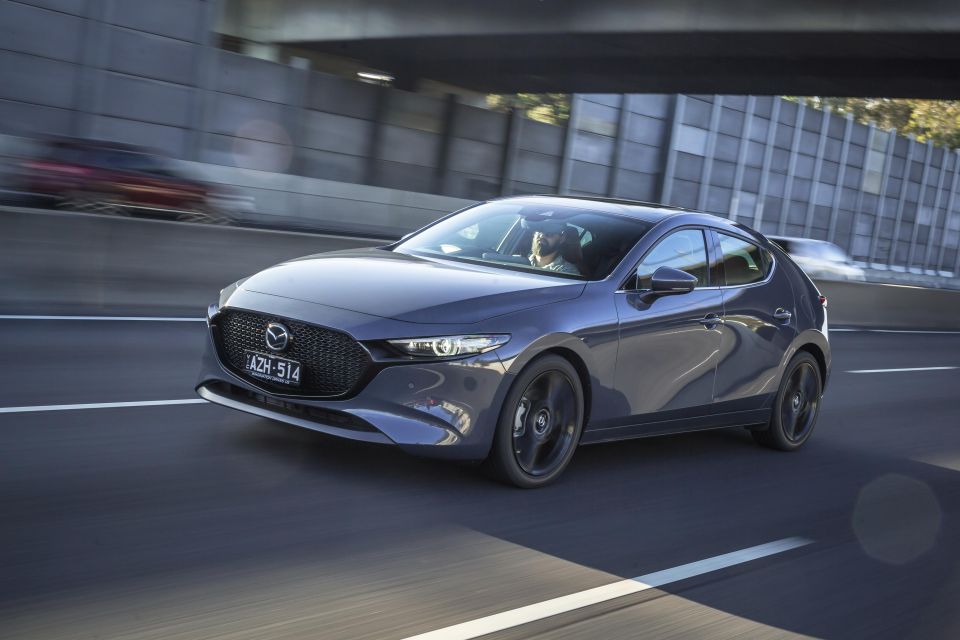
Servicing intervals for the X20 Astina SkyActiv-X are every 12 months or 10,000km, whichever comes first.
Service pricing for the SkyActiv-X drivetrain isn’t available yet, but as a reference, the G25 Astina will cost $1692 over five years, or around $338 per service.
My hat goes off to Mazda for transforming the internal combustion process, and taking advantage of mixing compression ignition with spark ignition to create something we haven’t seen before.
But outside of the benefits achieved with the inclusion of a 24V mild hybrid system, the new engine doesn’t seem to be as efficient as Mazda claims. We are generally able to achieve fuel economy within the ballpark of most small hatches’ claims, but it was a fair way off when driven normally.
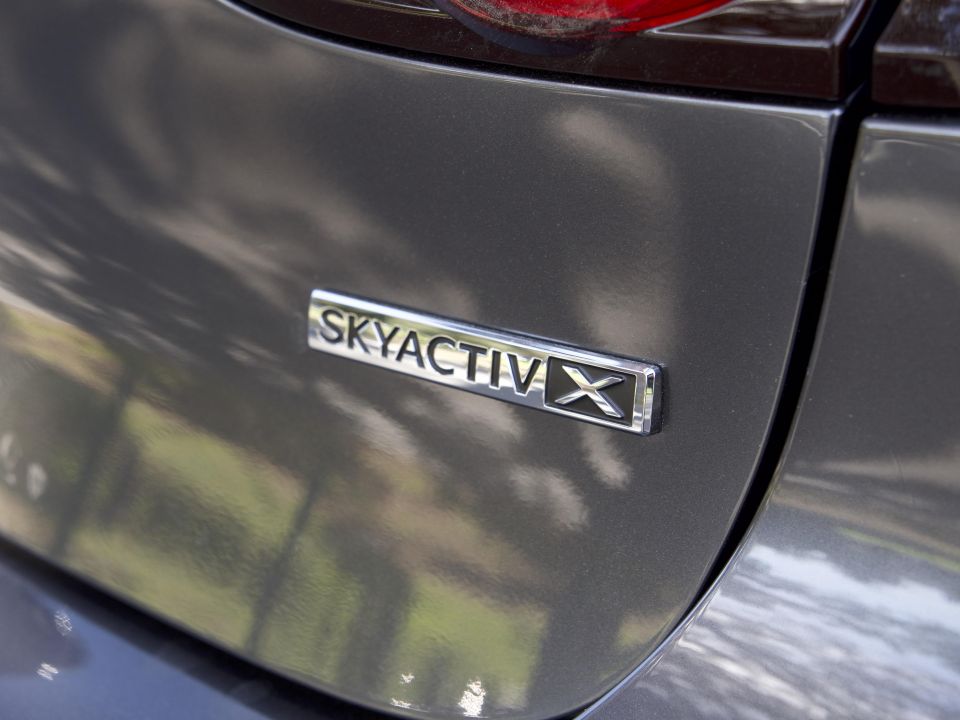

We’re not sure if that’s due to the gearbox’s eagerness to sit within its torque band (around 3000rpm), or whether it’s the added weight the 2.0-litre engine is forced to carry. Either way, it would be nice to see more development on this drivetrain to see whether playing with the ingredients can help achieve better economy.
This car is likely to be bought by early adopters that want the best of the best, but at this point we don’t see the worth in spending an additional $3000 over the G25 Astina. Even if the vehicle could hit its claimed fuel economy, it would take around 200,000km of travel to repay the $3000 investment.
But that investment brings you mild hybrid technology and a smoother drive experience, which could be worth the investment for some.
Where expert car reviews meet expert car buying – CarExpert gives you trusted advice, personalised service and real savings on your next new car.
Paul Maric is a CarExpert co-founder and YouTube host, combining engineering expertise with two decades in automotive journalism.


William Stopford
17 Hours Ago


CarExpert.com.au
4 Days Ago


Damion Smy
5 Days Ago


Damion Smy
9 Days Ago
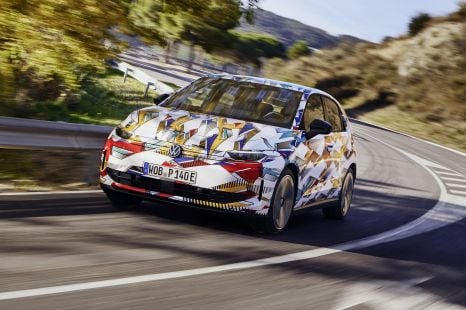

William Stopford
12 Days Ago
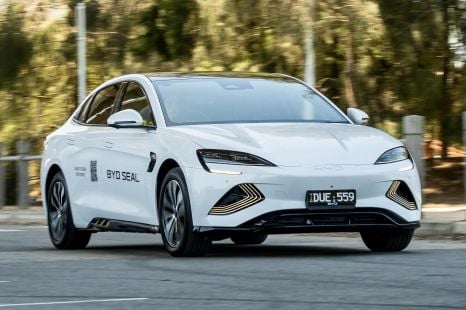

Max Davies
13 Days Ago